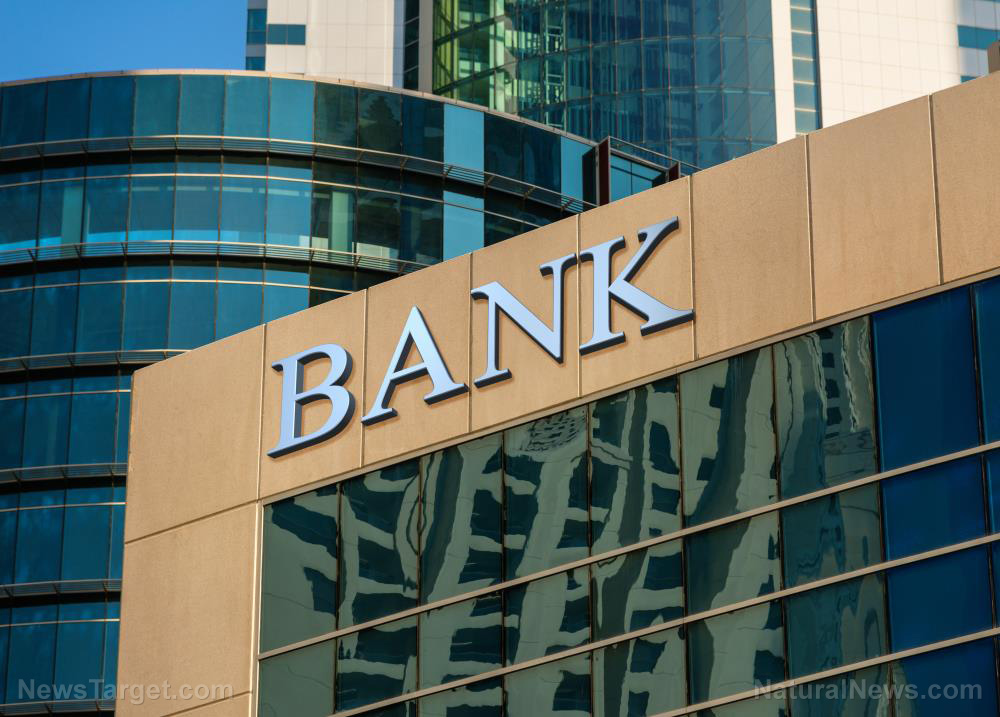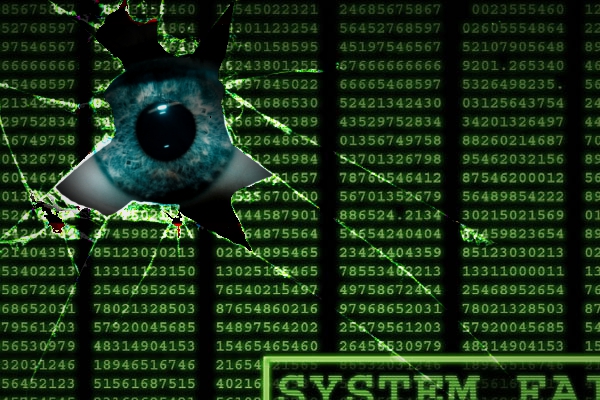Intentional destruction
12/19/2023 / By News Editors

A recent book by David Webb sheds new light on exactly what happened during the Great Depression. In Webb’s view, it was a set up.
Webb is a successful former investment banker and hedge fund manager with experience at the highest levels of the financial system. He published The Great Taking a few months ago, and recently supplemented it with a video documentary. Thorough, concise, comprehensible and FREE. Why? Because he wants everyone to understand what’s being done.
The Great Taking describes the roadmap to collapse the system, suppress the people, and seize all your assets. And it includes the receipts.
(Article by Matthew Smith republished from DougCasey.Substack.com)
You Already Own Nothing
Webb’s book illustrates, among other things, how changes in the Uniform Commercial Code converted asset ownership into a security entitlement. The “entitlement” designation made personal property a mere contractual claim. The “entitled” person is a “beneficial” owner, but not the legal one.
In the event a financial institution is insolvent, the legal owner is the “entity that controls the security with a security interest.” In essence, client assets belong to the banks. But it’s much worse than that. This isn’t simply a matter of losing your cash to a bank bail-in. The entire financial system has been wired for a controlled demolition.
Webb describes in detail how the trap was set, and how the Great Depression provides precedent. In 1933, FDR declared a “Bank Holiday.” By executive order, banks were closed. Later, only those approved by the Fed were allowed to reopen.
Thousands of banks were left to die. People with money in those disfavored institutions lost all of it, as well as anything they’d financed (houses, cars, businesses) that they now couldn’t pay for. Then, a few “chosen” banks consolidated all the assets in the system.
Centralization and Systemic Risk
As Webb shows, the cake has been baked for years. But this week came a sign it’s coming out of the oven. Last Monday, Bloomberg admitted that measures taken to ostensibly “protect the system” actually amplify risk.
In the wake of the 2008 financial crisis, G20 ‘leaders’ mandated all standardized Over The Counter (OTC) derivatives be cleared through central counterparties (CCPs), ostensibly to reduce counter party risk and increase market transparency. The best known CCP in the US is the Depository Trust and Clearing Corporation (DTCC), which processes trillions of dollars of securities transactions each day.
Before 2012, OTC derivative trades were bi-lateral and counterparty risk was managed by parties to a transaction. When doing business directly with other firms, each had to make sure it was dealing with reliable parties. If they had a bad reputation or were not creditworthy, counterparties could consider them toxic and shut them out of trades. This, according to the wise G20 leadership, was too risky.
With the introduction of central clearing mandates, counterparty risk was shifted via CCPs away from the firms doing the deal to the system itself. Creditworthiness and reputation were replaced with collateral and complex models.
Brokers, banks, asset managers, hedge funds, corporations, insurance companies and other so-called “clearing parties” participate in the market by first posting collateral in the form of Initial Margin (IM) with the CCP. It’s through this IM and a separate and much smaller Default Fund (DF) held at the CCP that counterparty risk is managed.
To ‘Mutualise’ Losses
Shifting risk from individual parties to the collective is a recipe for trouble. But, as explained in a recent report from the BIS, it’s worse than that. The structure of CCPs themselves can cause “Margin Spirals” and “wrong-way risk” in the event of market turbulence.
In flight-to-safety episodes, CCPs hike margin requirements. According to the BIS,
“Sudden and large IM hikes force deleveraging by derivative counterparties and can precipitate fire sales that lead to higher volatility and additional IM hikes in so-called margin spirals.”
We’ve already gotten a taste of what this can look like. Similar margin spirals “occurred in early 2020 (Covid-19) and 2022 (invasion of Ukraine), reflecting the risk-sensitive nature of IM models.”
Government Bonds as a source of trouble
The second area of systemic risk is the dual use of government bonds as both collateral and as underlying assets in derivatives contracts. Volatility in the government bond market can lead to a demand for more collateral underlying the derivatives markets precisely when government bond prices are declining. Falling bond prices erode the value of the existing IM. Collateral demands skyrocket just as the value of current and would-be collateral is evaporating.
Again, the BIS:
Wrong-way risk dynamics appeared to play a role during the 2010–11 Irish sovereign debt crisis. At that time, investors liquidated their positions in Irish government bonds after a CCP raised the haircuts on such bonds when used as collateral. This led to lower prices of Irish government bonds triggering further haircuts, further position closures and ultimately a downward price spiral.
Designed to fail
The BIS doesn’t admit it, but Webb says the CCPs themselves are deliberately under-capitalized and designed to fail. The start-up of a new CCP is planned and pre-funded. When that happens, it’ll be the “secured creditors” who will take control of ALL the underlying collateral.
Once more, the BIS:
…to mutualise potential default losses in excess of IM, CCPs also require their members to contribute to a default fund (DF). As a result, CCPs are in command of large pools of liquid assets.
That “large pool of liquid assets” is the full universe of traded securities.
In a market collapse, the stocks and bonds you think you own will be sucked into the default fund (DF) as additional collateral for the evaporating value of the derivatives complex. This is “The Great Taking”.
Buffett’s famous line rings true: “You only find out who is swimming naked when the tide goes out.” Most of us are on the verge of learning that we’re the ones without any clothes.
If you haven’t read “The Great Taking” or watched the documentary, I recommend you pour yourself a stiff drink and watch it now:
Read more at: DougCasey.Substack.com
Submit a correction >>
Tagged Under:
big government, Bubble, central counterparties, Collapse, conspiracy, David Webb, debt bomb, debt collapse, deception, deep state, Default Fund, economic riot, economy, finance riot, Great Depression, market crash, money supply, rigged, risk, The Great Taking, truth, tyranny
This article may contain statements that reflect the opinion of the author
RECENT NEWS & ARTICLES
COPYRIGHT © 2017 MARKET CRASH NEWS




















